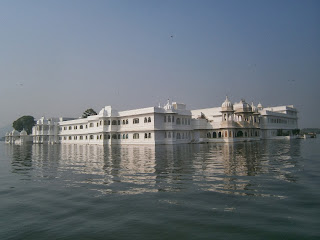We had plenty of exercise yesterday with a 5 hour hike to the most celebrated location in the country. Mythology says that centuries ago the Guru Rinpoche flew from the east of the country on a tiger's back, landed and stayed at a cave in these rocks. He frightened all the evil spirits away and it became a sacred place where this temple was built and named Tiger's Nest.
You get used to stories like these after a while but there's no doubt about it being a most spectacular location and it was by far the busiest place we have visited.
If you have any interest in Bhutan we suggest you come sooner rather than later, the modern world is fast catching up here. Roads are being widened all over the place, construction of homes, offices and hotels is booming (mostly built by Indian men and women). WIFI is everywhere, mobile phone service goes right to the tops of the mountains and there are at least 50 TV Channels (again from India) with Bollywood, Premier League, HBO, CNN and American sitcoms, to name a few.
One priceless moment was in a temple where a young monk was sitting cross legged in front of his little table, manuscripts laid out, he looked quite dedicated but on closer inspection we could see he was actually on his iphone.
The Positives: Stunning scenery, historical sites, friendly (shy) people, few tourists, good weather, no hawkers, all the modern communications, inexpensive.
Other observations.
Modest hotels, little to do in the evening, poor lighting, basic food which is the same everywhere, some roads are poor, dogs (sleep all day bark all night), more litter than there should be.
A view of the Himalayas from Chelela Dantak on our drive today to Haa.
There isn't much in Haa, it was very isolated until recently but it's a nice drive. The views and a picnic overlooking the mountains made it worth the trip. It's been great, a week was enough and it's time to go home. Where next? We don't know.
You get used to stories like these after a while but there's no doubt about it being a most spectacular location and it was by far the busiest place we have visited.
If you have any interest in Bhutan we suggest you come sooner rather than later, the modern world is fast catching up here. Roads are being widened all over the place, construction of homes, offices and hotels is booming (mostly built by Indian men and women). WIFI is everywhere, mobile phone service goes right to the tops of the mountains and there are at least 50 TV Channels (again from India) with Bollywood, Premier League, HBO, CNN and American sitcoms, to name a few.
One priceless moment was in a temple where a young monk was sitting cross legged in front of his little table, manuscripts laid out, he looked quite dedicated but on closer inspection we could see he was actually on his iphone.
The Positives: Stunning scenery, historical sites, friendly (shy) people, few tourists, good weather, no hawkers, all the modern communications, inexpensive.
Other observations.
Modest hotels, little to do in the evening, poor lighting, basic food which is the same everywhere, some roads are poor, dogs (sleep all day bark all night), more litter than there should be.
A view of the Himalayas from Chelela Dantak on our drive today to Haa.
There isn't much in Haa, it was very isolated until recently but it's a nice drive. The views and a picnic overlooking the mountains made it worth the trip. It's been great, a week was enough and it's time to go home. Where next? We don't know.







































